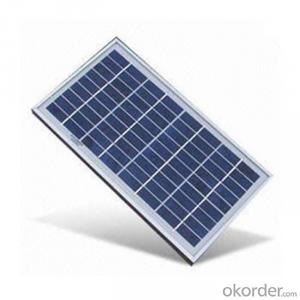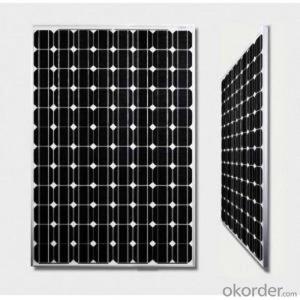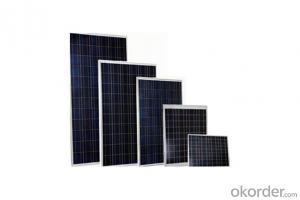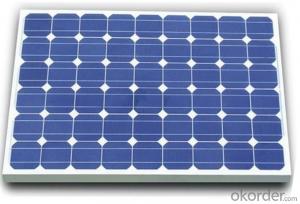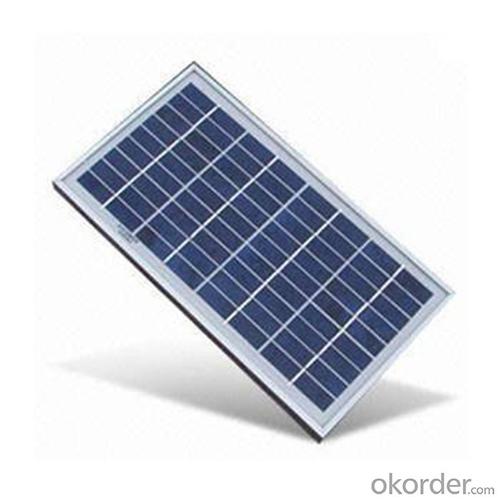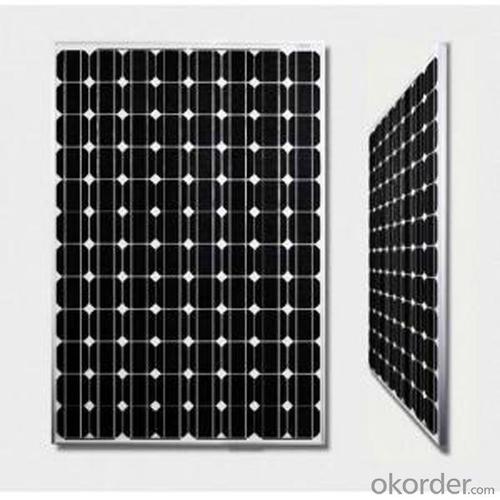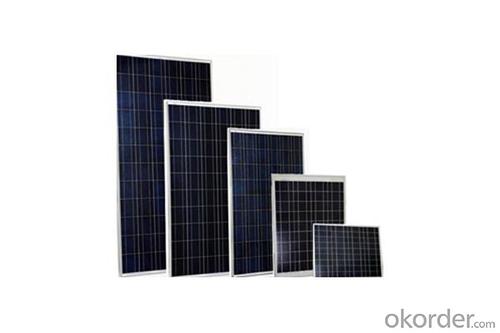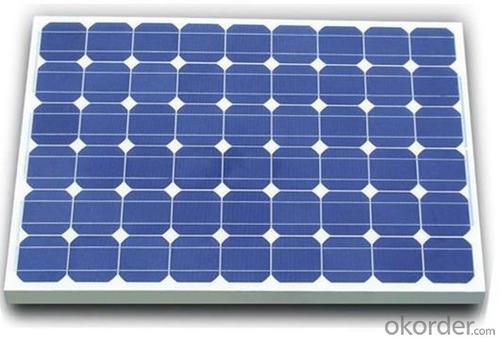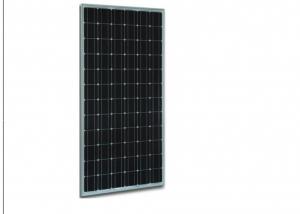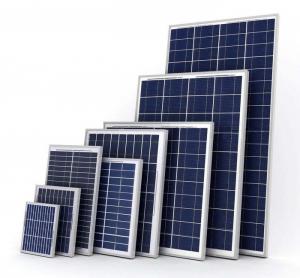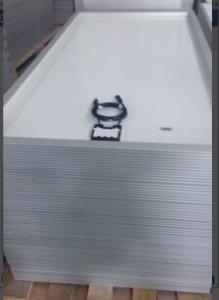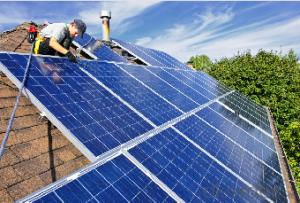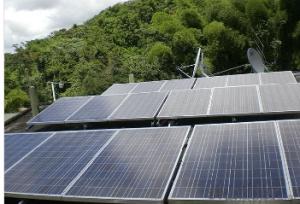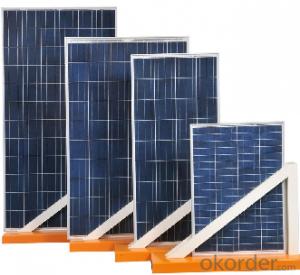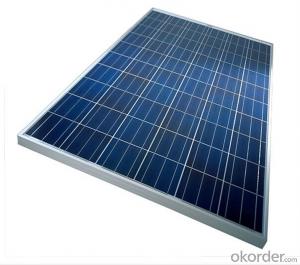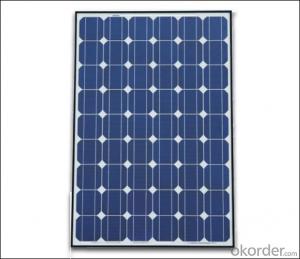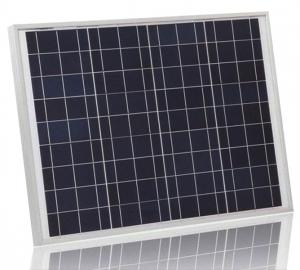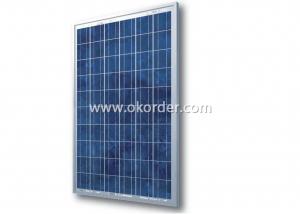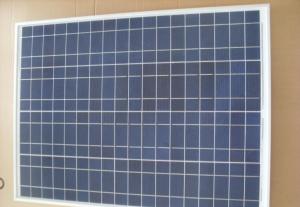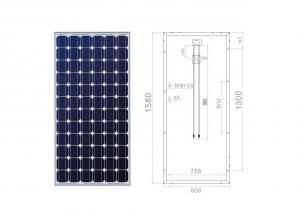Solar Panels in The Snow 225Wp Special for Off-Grid Solar Power System Paneles Solares
- Loading Port:
- China main port
- Payment Terms:
- TT OR LC
- Min Order Qty:
- 700 watt
- Supply Capability:
- 20000000 watt/month
OKorder Service Pledge
OKorder Financial Service
You Might Also Like
Solar Panel 225Wp special for Off-grid Solar Power System Paneles Solares
Product Pictures

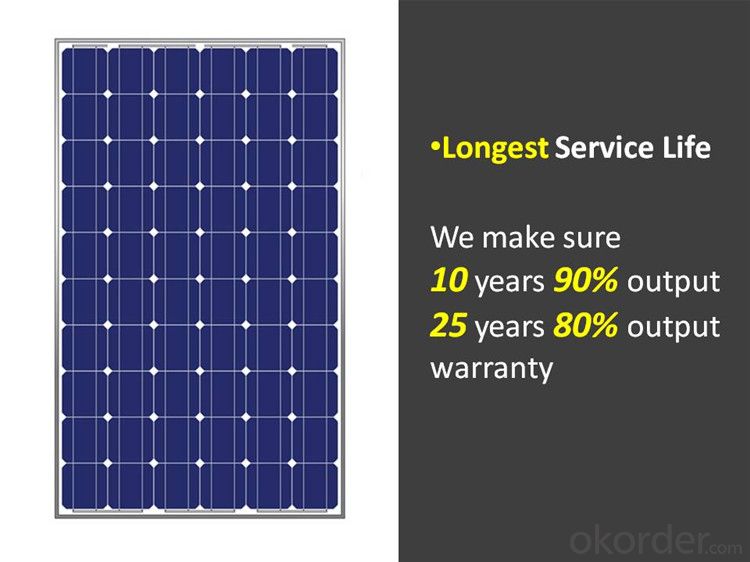
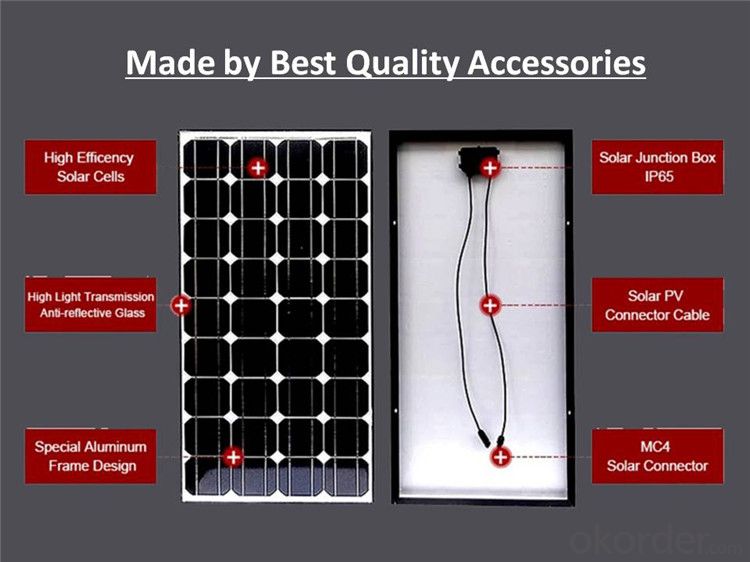
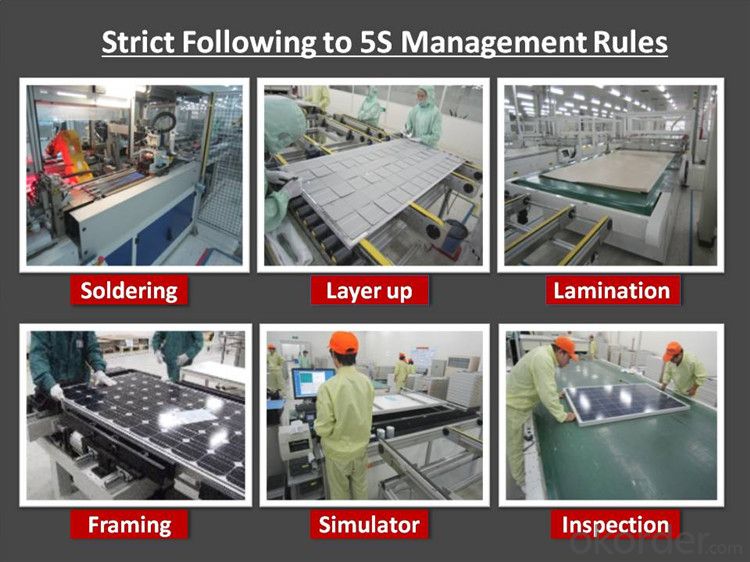

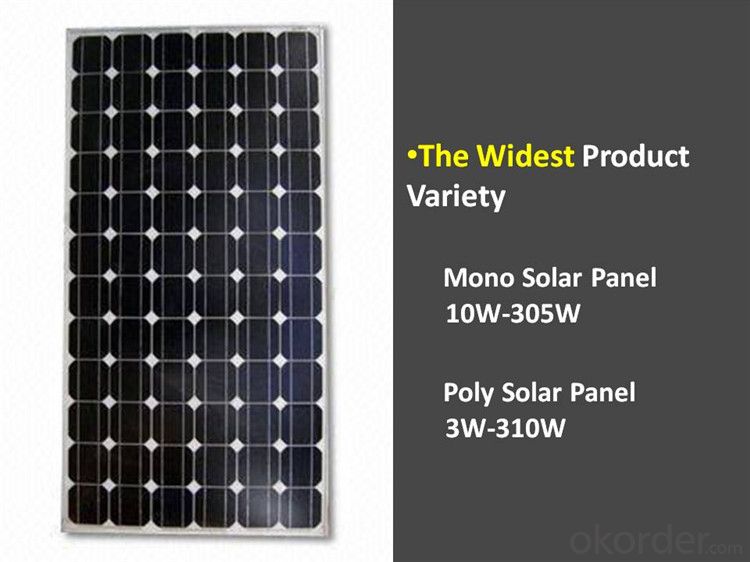
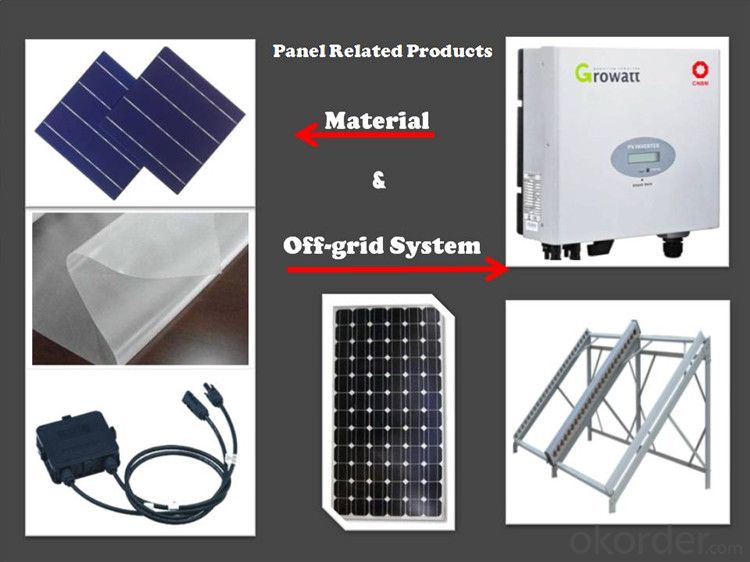
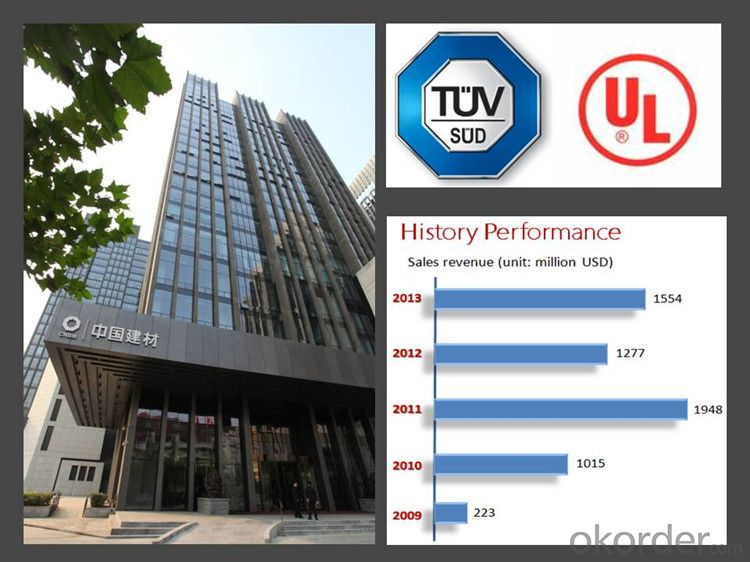
Mechanical Characteristics
Peak power (Pmax) | 10W |
Power tolerance | ±5% |
Max. system voltage | 1000VDC |
Open circuit voltage (Voc) | 21.4V |
Short circuit current (Isc) | 613mA |
Max. power voltage (Vmp) | 18V |
Max. power current (Imp) | 0.557A |
Cell Efficiency | >16% |
Standard Test Condition (STD) | Irradiance:1000W/m2;Cell temperature:25℃; AM:1.5 |
Operating temperature | -40 to+ 85℃ |
Applications
Commercial/ industrial building PV solar roof-top off-grid systems.
Residential PV solar roof-top off-grid systems.
Any commercial / industrial ground mount off-grid systems.
Other off-grid industrial and commercial solar PV applications.
Warranty
10 year limited product warranty on materials and workmanship.
25 year limited power warranty on power output.
≥90% power output assurance for 10 years and ≥80% power output assurance for 25 years.
Refer to warranty document for detailed warranty information.
- Q: Are there any restrictions or regulations regarding solar panel installations?
- Yes, there are restrictions and regulations regarding solar panel installations. These can vary depending on the location and jurisdiction. Common regulations include obtaining permits, adhering to building codes and zoning requirements, maintaining a certain distance from property lines, and complying with electrical and safety standards. It is important to consult with local authorities and professionals to ensure compliance with all applicable regulations before installing solar panels.
- Q: Are there any limitations to the lifespan of solar panels?
- Yes, there are limitations to the lifespan of solar panels. While solar panels are designed to be durable and long-lasting, they do have a finite lifespan. The average lifespan of solar panels is typically around 25-30 years. However, environmental factors, such as extreme weather conditions, can affect their performance and longevity. Over time, solar panels may experience degradation, reducing their efficiency and power output. Additionally, technological advancements may render older solar panel models outdated or less efficient. Despite these limitations, proper maintenance and regular cleaning can help extend the lifespan of solar panels.
- Q: For my exam in science we are required to make a power point explaining why it would be good for our school to switch to solar. our complete handout given to us by our teacher is as follows:Power Point to include:. What you propose for alternative energy usea. Any thoughts on energy conservation...2. Why this is a good idea3. What information you would give the solar company (area of roof space your group determined to be useable for solar)In PowerPoint - include your quot;scriptof what you would be saying when the slide is up in the Notes section below the slideANY HELP WOULD BE GREATLY APPRICIATED!!THANK YOU SO SO MUCH,QH
- Refuse to do the work on the grounds that it is not good for your school to switch. If the teacher tries to give you an F, escalate the problem to the principle and then the local news agency. Teachers are not allowed to force brainwashing.
- Q: So lets say that Everyday I use ,280 kWh. How many 250 watt solar panels would I buy so that I don't need to buy electricity anymore. Sorry if this sounds stupid, I am doing research on why american homes should become more cost efficient.
- I okorder /... Home Power (magazine)
- Q: I have a home made 24 volt electric cart. It is powered by two 2Volt deep cycle batteries. Since the motor runs on 24 volts the batteries are wired in series to produce the 24 volts. I only have a 2 volt battery charger, but I also have two 2 volt solar panels. It is a pain having to unhook wires, rewire it, or charge them one at the time.HERE IS THE QUESTION REALLY... Can I wire the two 2 volt solar panels together in series (ie: negative to positive) then connect it to the existing 24 volt system and have it charge the batteries fine. I know basic wiring, but I know nearly nothing about solar panels, will it work fine? will it cause them to break? or short out?(additional info, the solar panels are only rated at 5 amps so it will not overcharge the batteries or anything)
- Wiring the panels in series should be ok as long as they are exactly the same. Different impedance's could damage the panels. Remember that Voltages and Amperage's are indirectly proportional meaning that if you series your panels your voltage will rise but the amperage will be reduced.
- Q: What are the maintenance requirements for solar panels?
- The maintenance requirements for solar panels typically involve regular cleaning to remove dirt and debris, as well as ensuring that they are not shaded by nearby trees or structures. Additionally, occasional inspections for any signs of damage or malfunction are recommended, and if necessary, repairs or replacements may need to be carried out by a professional. Overall, solar panels are known for their low maintenance needs, making them a cost-effective and sustainable energy solution.
- Q: Hi,I am thinking about getting solar panels installed. # I like to cut my electric bill. #2 I like to eliminate my oil boiler and use some sort of electric boiler.I use about 5000-30000 KW per hour( winter-summer). My oil bill is around 600 month winter time. Over all i pay around 4000 a year. My electric bil now is around 2000-2500 year. Is this possible? I live in NY. I heard you can get up to $35000 rebate from LIPA( Electric company) and 2k from federal and 5k from State( is the state or federal every year?, how does that work). Any help is appreciated.
- How Solar Cells Work by way of Scott Aldous Inside This Article a million. Introduction to How Solar Cells Work two. Photovoltaic Cells: Converting Photons to Electrons three. How Silicon Makes a Solar Cell four. Anatomy of a Solar Cell five. Energy Loss in a Solar Cell 6. Solar-powering a House 7. Solving Solar-energy Issues eight. Solar-energy Pros and Cons nine. Lots More Information 0. See all Physical Science articles You've most likely visible calculators that experience sun cells -- calculators that certainly not want batteries, and in a few instances do not also have an off button. As lengthy as you have got sufficient mild, they look to paintings eternally. You could have visible better sun panels -- on emergency street indicators or name containers, on buoys, even in parking plenty to energy lighting fixtures. Although those better panels are not as ordinary as sun powered calculators, they are in the market, and no longer that rough to identify if you recognize in which to appear. There are sun mobile arrays on satellites, in which they're used to energy the electric strategies. You have most likely additionally been listening to approximately the sun revolution for the final twenty years -- the inspiration that sooner or later we can all use loose electrical power from the solar. This is a seductive promise: On a brilliant, sunny day, the solar shines roughly a million,000 watts of vigour in step with rectangular meter of the planet's floor, and if we might accumulate all of that vigour we might simply energy our houses and places of work free of charge.
- Q: Can solar panels be installed in a shaded area?
- Solar panels can be installed in shaded areas, but their efficiency and power output may be significantly reduced. Direct sunlight is necessary for optimal performance, so shaded areas may not provide the same energy generation as panels in direct sunlight.
- Q: China is building solar panels and have been for years. That is the most abundant energy in the world. My nieghbor has two panels on his roof and he actually sells energy back to the electric company. These panels cost about $30,000. each, because we don't produce them here on that level.If we did, that price would drop drastically. Other alternatives are also available. Drilling for oil will no change anything. Once you give the oil companie the go ahead, the will focus on that and the alternatives won't be developed any farther. We will be right back here in about 0 years. The price will not go down anyway. So why not switch half of our fuel to alternatives?
- Well, for thirty grand I hope they're of better quality than most of the stuff coming out of there.....Meh, I've got an old Boy Scout manual and some Foxfire books. I'll just make some myself this weekend.
- Q: Can solar panels be installed on satellites?
- Yes, solar panels can be installed on satellites. In fact, solar panels are commonly used to provide power to satellites in space.
Send your message to us
Solar Panels in The Snow 225Wp Special for Off-Grid Solar Power System Paneles Solares
- Loading Port:
- China main port
- Payment Terms:
- TT OR LC
- Min Order Qty:
- 700 watt
- Supply Capability:
- 20000000 watt/month
OKorder Service Pledge
OKorder Financial Service
Similar products
Hot products
Hot Searches
Related keywords
